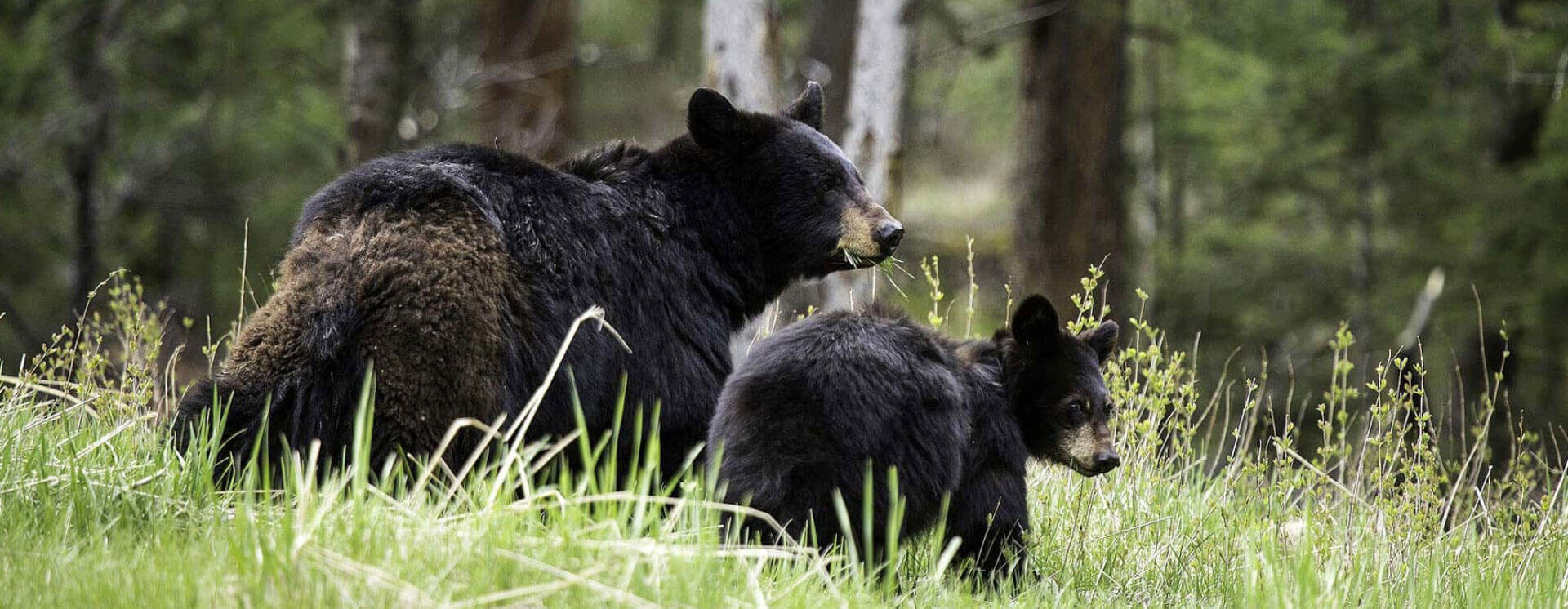It is the responsibility of people living in black bear habitat to help prevent conflicts. The Wood River Wildlife Smart Communities Coalition does not believe there is such a thing as a “problem bear.” When a bear gets in to garbage, birdfeeders, pet food, or in to a house, the problem was never the bear (who is simply going after an easy meal). The problem is unsecured food items, or attractants. Luckily, a few changes in our behavior can remove these attractants and keep both people and bears safe. As a Wood River Valley resident, you play a vital role in ensuring that black bears stay wild. Without your help, bears that become conditioned to humans (oftentimes as a direct result of human-provided food) will be euthanized. Once food-conditioned, a bear cannot be rehabilitated and released back in to the wild (see research links). As the old adage goes, “A fed bear is a dead bear.”
Contrary to popular belief, more than 90 percent of most black bear diets consist of vegetation: berries, nuts and plants. A bear’s keen nose can smell foods up to five miles away! Although towns have hazards such as dogs, cars, and people, they also have the benefits of calories from unsecured garbage. The table below compares the calorie contents of some natural and human sourced black bear foods:
When two slices of pizza from a dumpster provides more calories than an hour spent raking huckleberry bushes, the benefits of town can quickly outweigh the risks. In addition to great noses, bears have great memories, and will revisit a home many times once they’ve found food there.
Bear safety at home
Residents of the Wood River Valley can take the following steps to keep themselves and bears safe:
- Secure all garbage in a locked garage or shed and put out the morning of trash pickup (not the night before).
- Do not feed birds during the months when bears are active (see our page on Feeding the Birds).
- Do not leave pet food outside.
- If you have fruit trees or berry bushes, harvest fruit as it becomes ripe. Pick up and dispose of or compost any fruit that falls on the ground.
- Do not leave windows or screen doors open if you are not home.
Bear safety when recreating in black bear habitat:
- Keep a clean camp. Contain all left over food scraps and coffee grounds in a trash bag.
- Do not keep food or odorous items (i.e. pet food, soap, bug spray, lotion, toothpaste, chewing gum) in your tent! Familiarize yourself with the proper way to hang food before you go (link to hanging food or picture).
- If you will be camping where trees are limited, you should carry a portable, bear-resistant canister (link to product) or odor proof barrier bags.
- Carry bear spray with you and understand how to effectively use bear spray.
- Do not recreate with earbuds in. Impeding your ability to hear your surroundings is never a good idea when you are on the trail.
- Make noise as you travel, particularly if you are coming up to a corner in the trail, the brush around you is thick, or you are close to a stream. All of these can limit a bear’s ability to detect you. You do not want to sneak up on a bear, as a startled bear can quickly become an aggressive bear.
- Keep your dogs on a leash. Several instances of dogs running ahead of their owners and startling a bear, only to turn and lead that bear back to their owner have been reported. See our page “Dogs and Wildlife”
Sources for bear-resistant equipment
- http://igbconline.org/certified-products-list/
- https://www.bearsmart.com/play/securing-food-garbage/
- https://www.bearsmart.com/play/bear-deterrents/bear-pepper-spray/
What to do if you encounter a black bear:
Most black bears prefer to avoid humans, which means encounters are fairly uncommon, however, if you do encounter a bear there are some actions you should take to minimize the chance of the situation escalating to an attack.
- Assess the situation – does the bear in front of you appear to have cubs? Is there a carcass or other food source close by?
- If the bear is seen at a large distance, do not approach it, and give the bear as much room as possible. Turn around and go back the way you came if you can, or take a detour, even if it means getting far off the trail.
